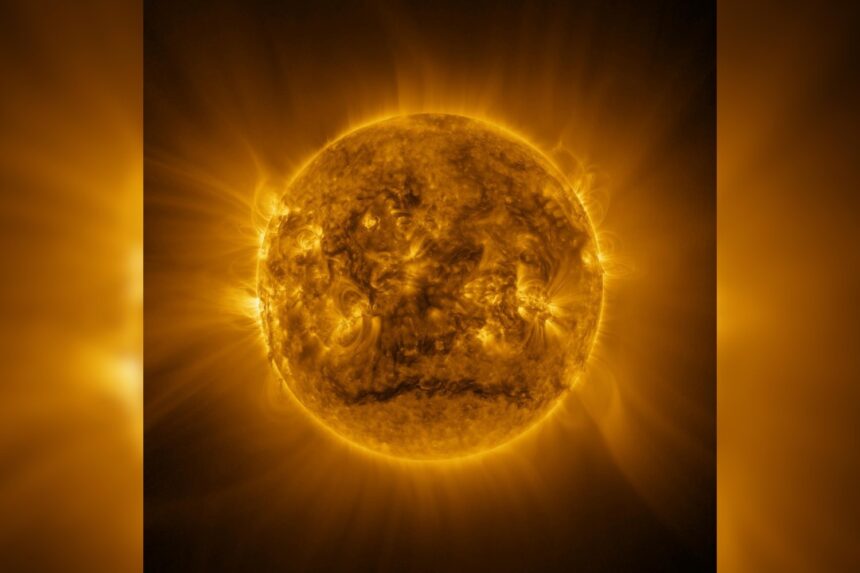A group of participants from several U.S. agencies took part in a first-of-its-kind exercise that tested their preparedness for a severe solar storm, revealing major cracks in scientists’ ability to forecast space weather—which could put crucial systems at risk.
The Space Weather Operations, Research, and Mitigation (SWORM) task force, an inter-agency group that includes the National Ocean and Atmospheric Administration (NOAA) and the Department of Homeland Security (DHS), organized a space weather exercise aimed at better understanding the U.S. government’s preparedness for an impending solar storm. The results were recently published in a report, which highlighted significant limitations in space weather forecasting.
The exercise was held from May 8 to 9, 2024, at the Johns Hopkins Applied Physics Laboratory (APL) in Laurel, Maryland, and at a Federal Emergency Management Agency (FEMA) site in Denver, Colorado. The space weather scenario was organized into four modules involving a series of solar events that resulted in adverse effects on our systems on Earth and in space. The effects included radio communication blackout, loss of GPS functionality, power outages, intense radiation exposure for astronauts and satellites, and an inability to track and communicate with orbiting satellites.
One of the modules took place in the future, asking participants to imagine a hypothetical scenario taking place over eight days in January and February 2028. In the scenario, NOAA tracks an active region on the solar surface that rotates to a position where it is pointed toward Earth. To make matters more complicated, a crew of two astronauts is en route to the Moon aboard the Orion spacecraft while another two-person crew is already on the lunar surface as part of the Artemis missions. The exercise asked participants to consider whether their agency or organization has policies or protocols in place in case of a major space weather event.
Coincidentally, the largest geomagnetic storm in more than 20 years took place around the same time as the exercise. On May 10, 2024, a G5, or extreme, geomagnetic storm, hit Earth as a result of large expulsions of plasma from the Sun’s corona (also known as coronal mass ejections). The G5 storm caused some deleterious effects on Earth’s power grid and some spectacular auroras seen across much of the globe. The storm also increased atmospheric density in low Earth orbit by up to an order of magnitude, which in turn caused atmospheric drag that affected satellites.
Space weather forecasters monitor the Sun’s activity and incoming coronal mass ejections, but these storms are hard to predict. “We never know what’s actually going to be, what the CME is composed of, and what to make of it until it gets just 1 million miles from Earth, where it’s only 15 to 45 minutes away,” Shawn Dahl, service coordinator for the Space Weather Prediction Center, told Gizmodo in an earlier interview. “That’s when we can see what the CME is composed of. How strong is it magnetically? What’s the speed of its movement? Is it going to connect with Earth?”
Participants found that the most challenging aspect to space weather forecasting is the inability to predict how the coronal mass ejection will affect Earth. Scientists are able to know the true impact of a coronal mass ejection about 30 minutes before it hits—that’s when the magnetic field orientation of the cloud of particles becomes apparent.
The report suggests investing in next-generation space weather satellites and developing and deploying more sensors to monitor space weather drivers. It also recommends that U.S. agencies collaborate with international partners and the private sector.
“Ongoing preparedness efforts for a space weather event are crucial because an extreme event has the potential to severely impact our nation’s critical infrastructure and threaten our national security,” the report read. “Just as we prepare for earthquakes, hurricanes and cyberattacks, our nation must take action before a major space weather event occurs.”
Read the full article here











